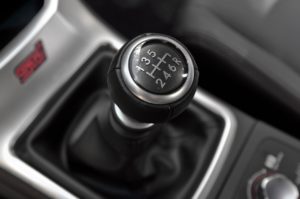 Manual transmission repair can be accomplished by just about anyone with the proper tools and sufficiently clear and concise instructions to follow. Manual transmissions change gears with the application of the clutch pedal and the shifting of gears using a stick shift. This action disengages the transmission from the flywheel temporarily in order to be realigned with another set of gears. Automatic transmission repair differs from manual transmission repair because of the clutch assembly.
Manual transmission repair can be accomplished by just about anyone with the proper tools and sufficiently clear and concise instructions to follow. Manual transmissions change gears with the application of the clutch pedal and the shifting of gears using a stick shift. This action disengages the transmission from the flywheel temporarily in order to be realigned with another set of gears. Automatic transmission repair differs from manual transmission repair because of the clutch assembly.
Common Transmission Problems and Repairs
Most transmission problems can be traced to parts that the average person can easily change. If have a funny smell coupled with limited acceleration, most likely your clutch is slipping. Try and adjust the clutch to see if this is all that is needed. If this doesn’t help, or the smell is accompanied by a scratching noise, you need to replace the clutch disc, pressure plate and throw out bearing. You may also need to have the flywheel turned, if there is excessive shininess or any grooves cut into the surface. If you are unable to shift gears when you depress the clutch, check to see if an adjustment is all that is required. If that doesn’t fix the problem, then either the clutch master or slave cylinder need to be replaced. If the clutch arm doesn’t move when the pedal is depressed, most likely the clutch master cylinder is faulty.
Average Transmission Repair Cost by Parts
The most common major transmission repair is a clutch replacement. Three parts are usually replaced during this repair, the pressure plate, clutch disc and throw out bearing. The pressure plate costs between $40 for a four cylinder economy car and $150 for a high performance eight cylinder. Clutch discs cost between $30 and $200, again with the high number being for a high performance vehicle. Throw out bearings cost between $20 and $50, depending on the application. Many parts stores carry matched set clutch repair kits. These cost between $100 and $800, again depending on the application and manufacturer. Other parts that are replaced often are the clutch cylinders, both master and slave. A clutch master cylinder runs between $20 and $50, while a slave cylinder costs between $10 and $40.
Loose Linkage Repair
Many manual transmission repairs are needed to fix a loose linkage.
- Conduct a visual inspection. Before disassembling the transmission, check for leaks and loose parts. Check for damaged or missing parts.
- Test drive. Sometimes the noises you believe is coming from the transmission are not in fact. While the car is running, step on the clutch and shift through the gears. Listen for any noises during the shifting. Also listen for any noises both before and after the clutch pedal is engaged. These noises can give you a hint as to what really needs repair. Sometimes noises are actually coming from the drive train.
- Check the engine mounts. Sometimes noises stem from loose engine mounts that allow the engine to “dance” around during operation.
- Raise the car. Using a floor jack, raise the car high enough to crawl underneath. Use jack stands to better secure the car so it will not fall off the floor jack and onto you.
- Disconnect and mark the drive shaft. Disconnect all electrical connectors. Mark the drive shaft so that you can place it in the same position later. Remove the rear U joint and plug the extension housing with a rag to prevent fluid leakage.
- Disconnect the linkages. Disconnect the speedometer cable and shift linkages. Inspect them for damage. Replace if necessary.
- Disconnect the transmission. If repairing the linkages does not fix the problem, it may be necessary to rebuild or replace the transmission. This is done by placing a jack under the transmission for support and disconnecting it from the engine. Using another jack to support the engine, move the transmission toward the rear of the vehicle.
- Replace the transmission. Move the transmission to another location nearby so that you can use the same jack for the new transmission. Place the new transmission on the jack and position it underneath the engine. Attach the new transmission to the engine and the vehicle.
- Reconnect the linkages. Reconnect all speedometer cables and shift linkages. Replace the U joint and the drive shaft back to the same position you marked earlier. Reconnect electrical connectors.
- Lower the car. Using the floor jack to support and stabilize the car, remove the jack stands. Lower the car by lowering the floor jack slowly and carefully.
Remember not every noise indicates trouble with the transmission. Careful inspection and listening can pinpoint the problem, which may not be as involved as you may have thought. It may be just as simple as tightening a nut or lubricating a joint.
Source:Carsdirect
